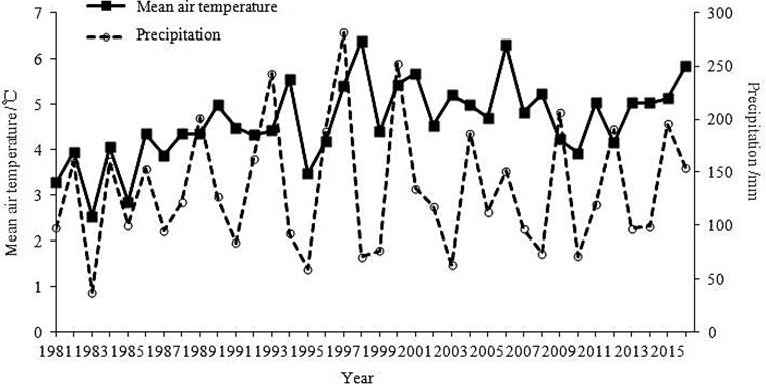The Effect of Climate Change on the Population Fluctuation of Overwintering Red-Crowned Crane in Yancheng Nature Reserve, China
The Effect of Climate Change on the Population Fluctuation of Overwintering Red-Crowned Crane in Yancheng Nature Reserve, China
Peng Xu1, Bin Liu1,2, Yongqiang Zhao3, Shicheng Lv3 and Changhu Lu1,*
Annual fluctuation of the mean air temperature and precipitation in the YNR during the wintering period of red-crowned crane from 1981 to 2016.
The change trends of the maximum wintering number of red-crowned crane inside YNR from 1981 to 2016.
Estimated changes in population sizes of the red-crowned crane under the effect of 3 climate variables, which was significant, from 1981 to 2016 in YNR using GAMs.
The significant correlation between the maximum number of red-crowned crane in the YNR and 5 climate variables within 10 years. F1, mean minimum air temperature in December 2 years earlier; F2, mean minimum air temperature in January of the following year 4 years earlier; F3, mean minimum air temperature in January of the following year 6 years earlier; F4, mean air temperature in January of the following year 6 years earlier; F5, precipitation in January of the following year 7 years earlier.
All subsets regression analysis to determine the best combination of climate factors. F1-F5 had been illustrated in Figure 4. F6, mean maximum air temperature in November; F7, mean minimum air temperature in December; F8, mean air temperature in December.














